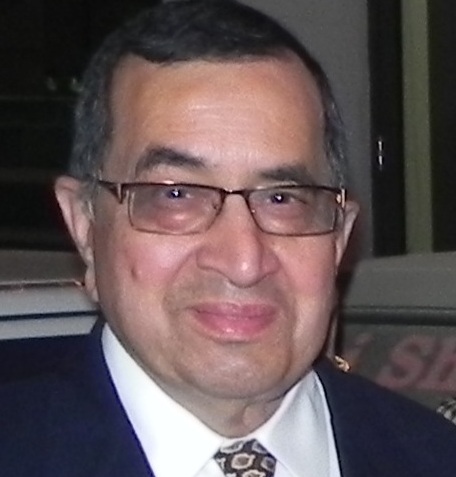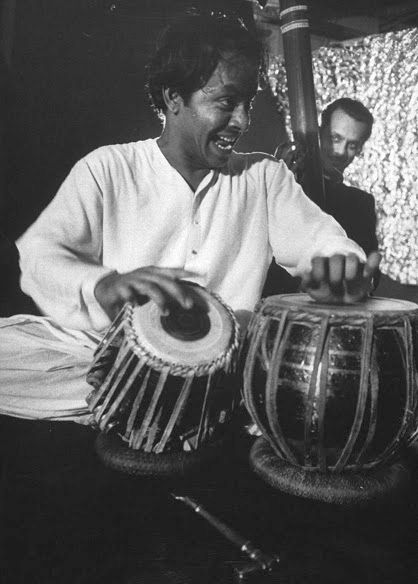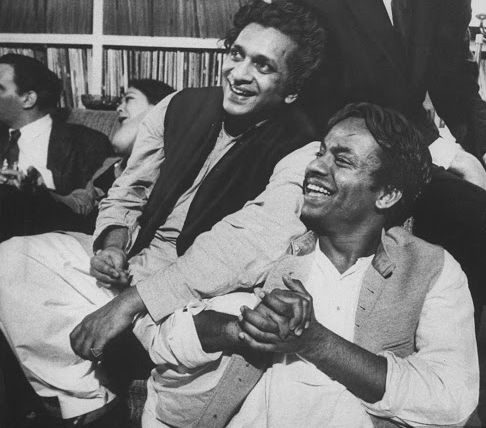Latest Contributions
Treating Chatur Lal, India’s famous tabla player
Category:

Born in 1941, Vinod was brought up and educated in Amritsar. He attended Government Medical College, and subsequently trained as a surgeon at PGI, Chandigarh. He left for USA in 1969, and retired in 2003 as Director of Critical Care Services at a teaching hospital in Michigan. Married with two grown sons, he continues to visit India at least once a year.
In 1965, I was being trained as a surgeon at Delhi’s Irwin hospital. (Ed. Note: His story is available here.) When our ward ran out of beds for the patients, they lay on thin red blankets on the floor-space between the beds. On a Saturday morning, when I went in to help with the new admissions, I would find some patients lying on the floor all the way in the corridor outside the ward.
One Saturday, I found a small, dark complexioned man lying on the floor. He had been admitted because he had blood in his urine. Very quickly, we realized that the man was Chatur Lal, a well-known tabla-player. His younger brother Ram Narain introduced himself, as did some more of his friends. Ram Narain played Sarangi, and later on became as famous as his brother.
By afternoon, we had found a bed for Chatur Lal, and instructed nurses to treat him well. My supervisor, Dr. Pandey, had taken over his care. People from the U.S. embassy were coming to visit Chatur Lal. Chatur Lal had little money for his treatment but had a lot of friends and admirers. He had performed with the famous Sitar player Ravi Shankar.
For several months thereafter there followed an odyssey for Chatur Lal that ended tragically. Initially, we thought that he suffered from kidney or bladder stones that were causing the bleeding. Dr. Pandey even found a stone in tabla-player's bladder and operated on him. After a few days, bleeding started up again and he was taken back to surgery. This pattern persisted for months. He received a lot of blood through his long illness and even developed jaundice.
We had moved Chatur Lal to the small annex that had served as our coffee-room. Now it was made up into a private patient-room. His important friends from the U.S. Embassy could visit him there.
He liked imported beer, which his American friends brought for him. We marvelled at the small, sleek looking beer cans that were so different from the large, amber coloured glass beer bottles the Indian beer came in. We were equally entertained by the appearance of the white young women and men dressed in muslin kurtas, jeans and cheap leather chappals on their feet, who came to meet him. They often had khadi bags slung from their shoulders. They were the vanguard of the hippies who were to flood the Indian scene just a few years later.
Chatur Lal was a gentle soul, always submitting to tests, X-rays and operations without a complaint. He promised to hold a concert on the hospital grounds after he recovered. A few times, he was even discharged home, only to come back with more bleeding.
After six months at Irwin Hospital, I left for Chandigarh to pursue postgraduate training in surgery. I heard that the following year that Chatur Lal did perform at a concert, not at the hospital, but at the Roosevelt House. He died a few months later, within a year of that fateful Saturday when I found him lying on the ward floor. (Ed. note: There is some confusion about Chatur Lal's date of death. According to a website dedicated to Chatur Lal, he died in October 1965. However, Dr. Puri stands by his memories, which indicate that the death took place in 1966.) He was barely 40 at his death.
My regret is that at that time I understood so little of Chatur Lal's genius. He is reputed to have changed the significance of tabla as an instrument that could hold its own, He evolved a style of his own, which has been commented by many authorities. So many of those who learnt from him have become famous in their own rights.
_______________________________________
© Vinod Puri 2014
From the Internet

http://www.youtube.com/watch?v=UyJjxAj3udM
http://www.youtube.com/watch?v=qKVhSNY2Lkc

http://www.youtube.com/watch?v=Yqt5-Z9FI4M
http://www.youtube.com/watch?v=LXXBfL5lRqE
Comments
Add new comment